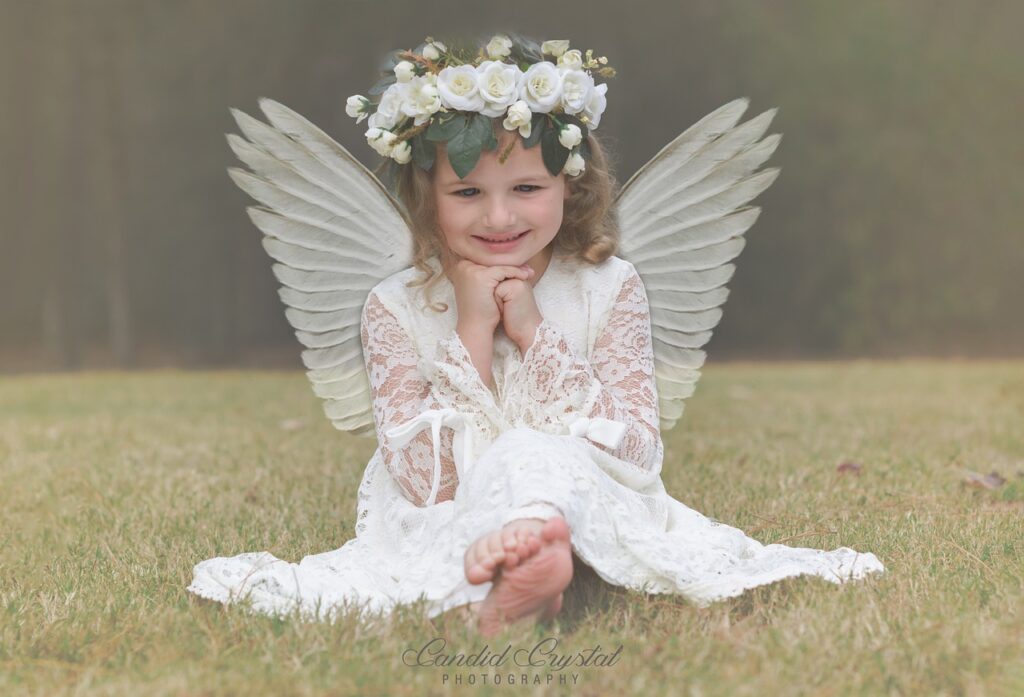
Can babies really see angels? This intriguing question has fascinated parents and caregivers for centuries. Many believe that infants possess a unique ability to perceive things beyond our physical world. Let’s explore the concept of babies seeing angels, the science behind their vision, and the cultural beliefs surrounding this topic.
Understanding Infant Vision
When babies are born, their vision is not fully developed. In fact, newborns can only see about 8 to 12 inches in front of them, which is just enough to focus on their mother’s face during feeding. As they grow, their eyesight improves rapidly. By the time they are around six months old, babies can see colors and have better depth perception. This developmental stage allows them to engage more with their surroundings.
The way babies perceive the world is different from adults. They are more sensitive to movement and contrast than to fine details. This means that they might react to shadows or light patterns in ways that adults do not. Some parents report that their infants seem to gaze at unseen things, leading to speculation about whether they can see angels or other spiritual beings.
Historical and Cultural Beliefs
Throughout history, various cultures have held beliefs about babies and their connection to the spiritual realm. Many cultures consider infants to be closer to God or the divine, and some believe that their innocence allows them to see angels. In Christianity, for example, angels are viewed as protectors and messengers of God. Parents often believe that their babies are under angels’ watchful eyes.
In other cultures, such as those influenced by Indigenous beliefs, infants are seen as having a special connection to the spirit world. Some people believe that children can see spirits or angels who guide them through life. These beliefs often provide comfort to parents, reinforcing the idea that their children are safe and protected.
Scientific Perspective
From a scientific standpoint, the idea that babies can see angels is not supported by empirical evidence. However, the phenomenon of infants appearing to gaze at something unseen can be explained through their developmental stage. Babies are naturally curious and often fixate on objects and sounds that adults may overlook. This can create the impression that they are interacting with something beyond our understanding.
Moreover, the human brain is wired to recognize patterns and faces, even in random stimuli. This might explain why some adults perceive that babies are looking at angels or spirits. The brain fills in gaps based on prior experiences and beliefs, leading to interpretations that may not reflect reality.
The Role of Imagination

Babies are born with an innate sense of wonder and imagination. As they grow, they develop their cognitive abilities, which allow them to create stories and concepts in their minds. This imaginative capacity is particularly strong during early childhood. It is not uncommon for toddlers to have imaginary friends or to talk about invisible beings.
In this context, a baby’s innocent imagination might lead them to ‘see’ things that others cannot. This imaginative play can also be influenced by the environment, including stories told by parents or cultural narratives about angels and spirits. The melding of imagination and perception adds another layer to the question of whether babies can truly see angels.
Parent Experiences and Anecdotes
Many parents have shared experiences that suggest their babies may be seeing angels or spirits. These anecdotes often involve moments when infants appear to be engaged with something invisible, such as giggling, cooing, or looking intently at a corner of the room. Parents often feel a sense of wonder and comfort during these moments, interpreting them as signs of a spiritual connection.
While these stories are anecdotal and subjective, they contribute to the cultural narrative surrounding babies and angels. Many parents find solace in believing that their children are protected and guided by benevolent forces. These experiences can foster a deeper bond between parents and their children, enriching the family’s spiritual narrative.
Psychological Interpretation
From a psychological perspective, the experiences that parents report can also be seen as reflections of their own beliefs and emotions. When parents are anxious or worried, they may project their feelings onto their babies’ behavior. If a parent believes strongly in angels or spiritual beings, they might interpret their child’s actions through that lens.
Furthermore, the phenomenon of pareidolia—seeing patterns, faces, or familiar shapes in random stimuli—can also play a role. When a baby stares intently, it may simply be a response to a fascinating visual pattern, rather than an encounter with an angelic presence. Understanding these psychological factors can provide insight into why parents might believe their babies can see beyond the physical world.
Spiritual Significance of Babies

Regardless of whether babies can see angels, many cultures view infants as spiritually significant. They are often seen as pure beings, untainted by the complexities of adult life. This perception can lead to a belief that they have a special connection to the divine or spiritual realm, which can be comforting for parents.
In many religious traditions, babies are viewed as blessings. They symbolize hope, renewal, and the continuation of life. This spiritual significance often shapes how parents interact with their children and the values they instill in them.
Encouraging Spiritual Awareness
Whether or not babies can see angels, parents often want to foster a sense of spiritual awareness in their children. This can be done through storytelling, sharing cultural beliefs, or encouraging imaginative play. By nurturing a child’s sense of wonder, parents can help them develop a connection to the world around them, including the spiritual aspects.
Creating a positive environment that embraces imagination and spirituality can also enhance bonding experiences. Parents can engage in activities such as reading stories about angels, discussing the concept of protection, or simply encouraging their children to express their thoughts and feelings. This approach can help children develop their own understanding of spirituality.
Conclusion
The question of whether babies can see angels remains open to interpretation. While science does not support the notion that infants can perceive spiritual beings, the beliefs surrounding this topic hold cultural and emotional significance. Parents often find comfort in the idea that their babies are watched over by unseen forces.
As children grow, their understanding of the world and spirituality will evolve. Encouraging open discussions about beliefs, imagination, and wonder can help foster a healthy spiritual awareness. Ultimately, whether or not babies can see angels, the love and protection that parents provide will always be the most vital force in a child’s life.
FAQs
1. Can babies sense the presence of deceased loved ones?
Many parents believe that babies can sense the presence of deceased loved ones due to their innocent and open nature. While there’s no scientific proof, anecdotal experiences often suggest that infants react to unseen presences in ways that are comforting to parents.
2. How can I support my baby’s spiritual development?
You can support your baby’s spiritual development by engaging in activities that encourage imagination, such as storytelling, nature walks, and open discussions about beliefs. Creating a nurturing environment helps foster their sense of wonder.
3. At what age do babies start recognizing familiar faces?
Babies typically begin to recognize familiar faces around 2 to 3 months of age. This ability continues to improve as they grow, allowing them to form attachments and connections with caregivers.
4. What is the significance of a baby’s gaze?
A baby’s gaze can indicate curiosity, engagement, or even a response to stimuli in their environment. Parents often interpret these gazes as moments of connection, whether with people or, in some beliefs, spiritual beings.
5. Are there any activities to promote a spiritual connection with my child?
Activities such as reading spiritual or uplifting stories, practicing mindfulness, or exploring nature together can promote a spiritual connection. Encouraging questions and discussions about beliefs also fosters this bond.






